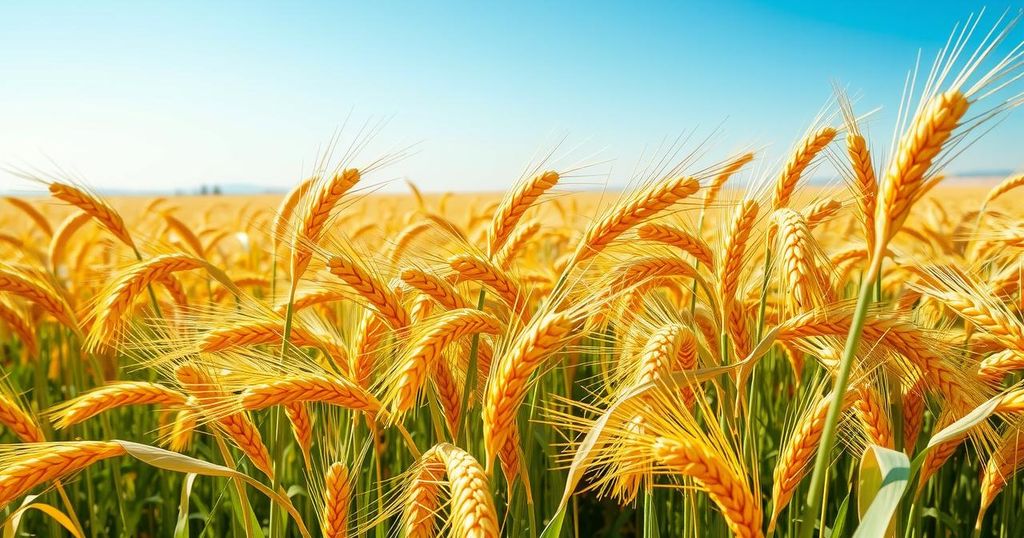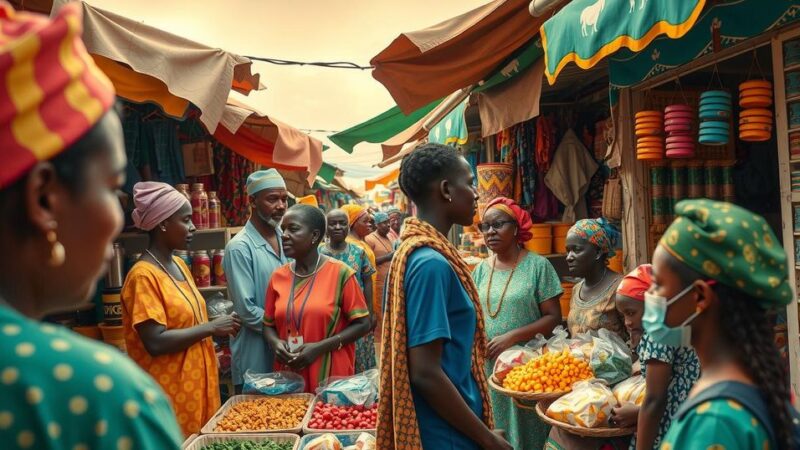Bank Al-Maghrib anticipates a small increase in Morocco’s grain harvest to 35 million quintals this year, falling short of the government’s target of 70 million. Recent rainfall has improved reservoir levels but has not resolved the country’s long-term drought issues, as experts warn of ongoing water scarcity, particularly in arid regions.
Morocco’s central bank, Bank Al-Maghrib (BAM), anticipates a modest increase in the grain harvest this year, although it will fall short of government projections. During a recent press conference, BAM Governor Abdellatif Jouahri estimated that the grain yield will reach 35 million quintals, which is an improvement from the previous year’s 31.2 million quintals, but significantly less than the 55.1 million quintals achieved in the 2022-2023 season.
BAM predicts a 2.5% increase in the agricultural sector’s added value, driven by the expected grain harvest and growth in non-grain agricultural production. Nevertheless, the bank has adjusted its forecasts downward, having originally projected a harvest of 50 million quintals last December, contingent on favorable rainfall. The bank indicated that well-distributed rain from December to March could have resulted in a harvest exceeding initial expectations.
In contrast, the Moroccan government set a more ambitious target of 70 million quintals in its financial law projections. Recent rain and snowfall have led to a rise in dam reservoir levels, which reached a 35% filling rate compared to 26% at the same time last year; however, this level remains far behind the 68% recorded in 2018.
The recent heavy rainfall has sparked optimism among farmers, particularly those cultivating autumn grains such as wheat, durum wheat, and barley. While experts acknowledge the benefits of the rainfall, they caution that it does not address Morocco’s enduring water crisis. “Morocco has always been a country of drought. This is structural, not something new. It existed before the establishment of the Moroccan state, before the Idrisid dynasty,” said Mohammed-Said Karrouk, a climatology professor at Hassan II University of Casablanca, highlighting that rainfall distribution has been uneven across the country.
He noted that the northern regions experienced the most significant rainfall, while the central and southern areas, which face greater drought challenges, received less rain and continue to struggle.
In summary, Bank Al-Maghrib projects a slight increase in grain harvest for Morocco this year, although the yield remains below government expectations. Despite improved rainfall conditions contributing to a 2.5% rise in agricultural value, water scarcity persists and poses long-term challenges for the nation. Experts emphasize the need for sustained rainfall distribution to mitigate ongoing drought concerns in the less affected regions.
Original Source: www.moroccoworldnews.com






